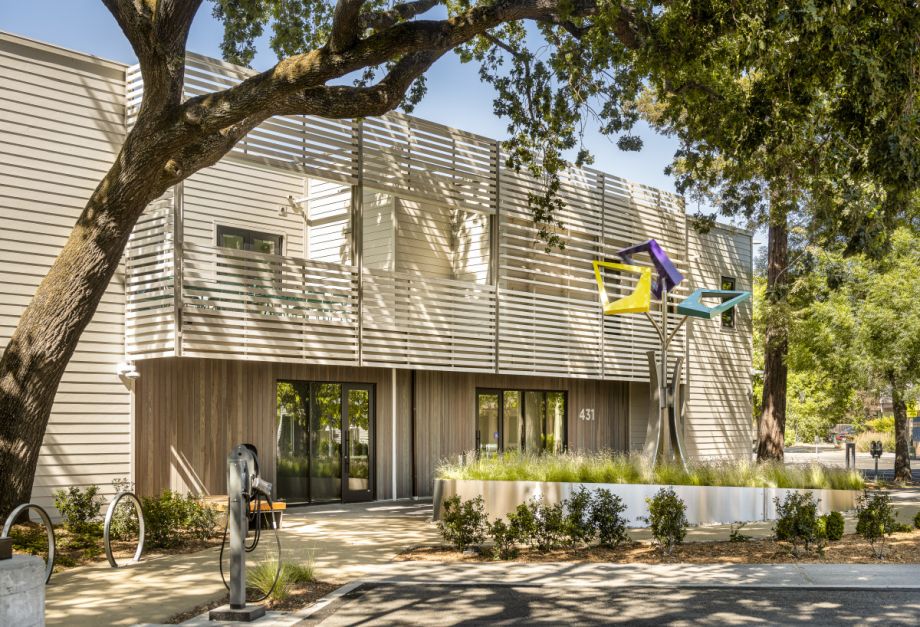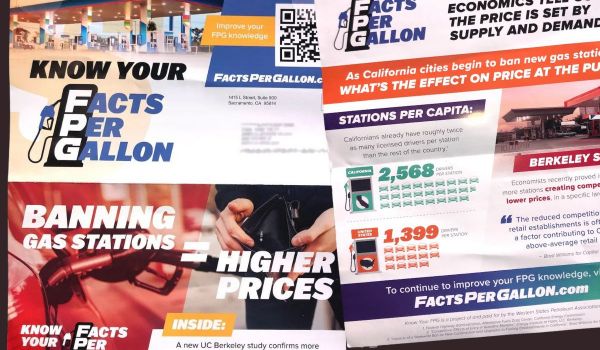Two years ago, the energy company Sonoma Clean Power set out to renovate a 1979 structure in Santa Rosa, California, for its new headquarters. The building had long been powered by natural gas. The vision for the final product was radically different — a test case to accelerate the decarbonization of the electrical power grid, an urgent imperative as the climate crisis worsens.
The strategy to enable that transition is the result of a partnership between the New Buildings Institute and U.S. Green Building Council, which spent several years developing the GridOptimal Buildings Initiative. The collaboration develops strategies to better integrate buildings into sustainable utility grid management, away from our dependence on fossil fuels, with the emphasis that buildings play a crucial role. Sonoma Clean Power’s Santa Rosa headquarters is the first completed pilot, with the hope of inspiring replicates.
“We want people to know that this can be replicated — that clean electricity and decarbonization are attainable today,” says Geof Syphers, chief executive officer of Sonoma Clean Power. “We also want people to understand that a 24/7, zero-emissions future for buildings is achievable and practical.”
Sonoma Clean Power is the public power provider for California’s Sonoma and Mendocino Counties. Alongside sourcing renewable energy for the region, the agency became vocal in how local residents, and buildings, can better address the climate crisis. The Advanced Energy Center, which the company opened in Santa Rosa last year, teaches visitors about energy-efficient technology for their home, points them to contractors and even offers financial assistance.
Sonoma Clean Power felt its new headquarters should showcase the environmental potential for a public utilities building. “We stuck our neck out, and wrote design criteria that the building would have to be dispatched to decarbonize the grid,” says Syphers. “We wrote a design spec that we understood maybe nobody could do.”
Sonoma Clean Power was informed by the GridOptimal Building Initiative, which is addressing a challenging energy transition taking place across the world. Our power grid has historically operated with one-way energy flows from large centralized power plants, a practice that’s detrimental to the environment and surrounding communities. Seeking to reduce dependency on power plants, cities have set carbon emission reduction targets and introduced more renewable energy sources like wind and solar.
We’re in transition between the centralized, fossil-powered grid of the past and the possibility of a mostly renewable, low-carbon grid, according to Alexi Miller, acting director of building innovation at New Buildings Institute. The need to transition is only growing as record heat waves have strained the grid across California and elsewhere.
Buildings use 75% of U.S. electricity and must be a critical part of that transition. “We want to use buildings as an asset to enable big-picture grid decarbonization,” Miller says. “And we want to also protect buildings by ensuring they’re flexible with energy usage and are in a good position to ‘play nice’ with that future grid.”
With guidance from Miller, a team came together to test “play nice” strategies at Sonoma Clean Power’s headquarters. EHDD Architecture served as architect while Guttmann & Blaevoet served as the project’s lead building infrastructure and sustainability engineer, with conceptual support from engineers at Point Energy Innovations.
The final strategy both “actively” and “passively” integrates the headquarters with the renewable energy grid, according to Miller.
For the passive component, the out-of-date structure was retrofitted to become an extremely energy efficient building. The natural gas infrastructure was removed for space heating and hot water, while the kitchen was refitted for advanced induction cooking. The new airtight building “envelope” retains heat and cooling. The all-electric building is partially powered by an on-site solar array. “A lot of this is not really rocket science,” says Miller. “It is imminently achievable to get buildings to the status we need to, for a zero-carbon economy.”
But it’s not enough for buildings to become zero-energy — they need to interact with the renewable power grid in new ways. This is the “active” component of the headquarters that’s most innovative.
The building tracks hourly how much carbon is emitted through the electrical grid. That information informs exactly when the building produces and uses power. For example, the battery system typically charges up around noon when there is an abundance of solar power. (Solar comes from both the onsite panels or from offsite solar farms, via the electricity grid.) During the evening, the building can then use that energy or even place it back onto the grid, to reduce the state’s reliance on power plants.
The building’s battery system, 23 electric car chargers, lights, HVAC and water heating can all adjust when they use electricity to ensure that energy is only drawn from the grid when plenty of clean power is available.
The building also stores enough energy so if the grid goes down — in a heatwave, for example — portions of the building can still operate, with the potential of serving as an emergency operations center during a natural disaster.
“We’re learning how to adapt to a building that does things without us telling it to,” says Syphers. This September, during a historic heat wave, the building ramped down its ground-floor HVAC system in the late afternoon to reduce energy usage. Fans started circulating cool air from the building’s upper floor. “At 6 p.m., the whole building shut down because it was do-or-die for the grid,” Syphers says. “There’s an adjustment to the reality that the carbon impact of the grid should have some impact on our lives.”
Sonoma Clean Power and the GridOptimal Building Initiative plan to use this building as a model for replication. “This building is set up as a living lab,” says Miller. “One thing we’re working on now is dashboards, so the people in the building can see real-time information on what power is coming into the building and where it is going.” Sonoma Clean Power plans to host students and professional groups, with the idea that the building can also become a teaching tool.
Miller believes an investment like this is a “win-win” — not only does it ensure the building is using as little energy as possible, it prepares the building for the radical changes coming for our energy grid.
“We can’t solve the problem with the old tools, especially when we’re turning the grid upside-down,” as Syphers puts it. “The paradigm shift means we need to do this ourselves to understand the impact.”

Emily Nonko is a social justice and solutions-oriented reporter based in Brooklyn, New York. She covers a range of topics for Next City, including arts and culture, housing, movement building and transit.
Follow Emily .(JavaScript must be enabled to view this email address)
















